Affiliate links on Android Authority may earn us a commission. Learn more.
Google Pixel Tablet hands-on: Such a great idea
The last time we saw an Android-powered tablet from Google was in 2015. To be clear, that predates the entire Pixel lineup (the OG Pixel smartphone launched in 2016). So yeah, it’s been a while. But here we are with a brand new slate from the company: the Google Pixel Tablet.
This is the first time there’s been a tablet with “Pixel” in its name. It’s also the first time a tablet has been designed purposely not to leave the house and be on a charger 90% of the time. Confused? Let me explain what’s happening here with our Pixel Tablet hands-on.
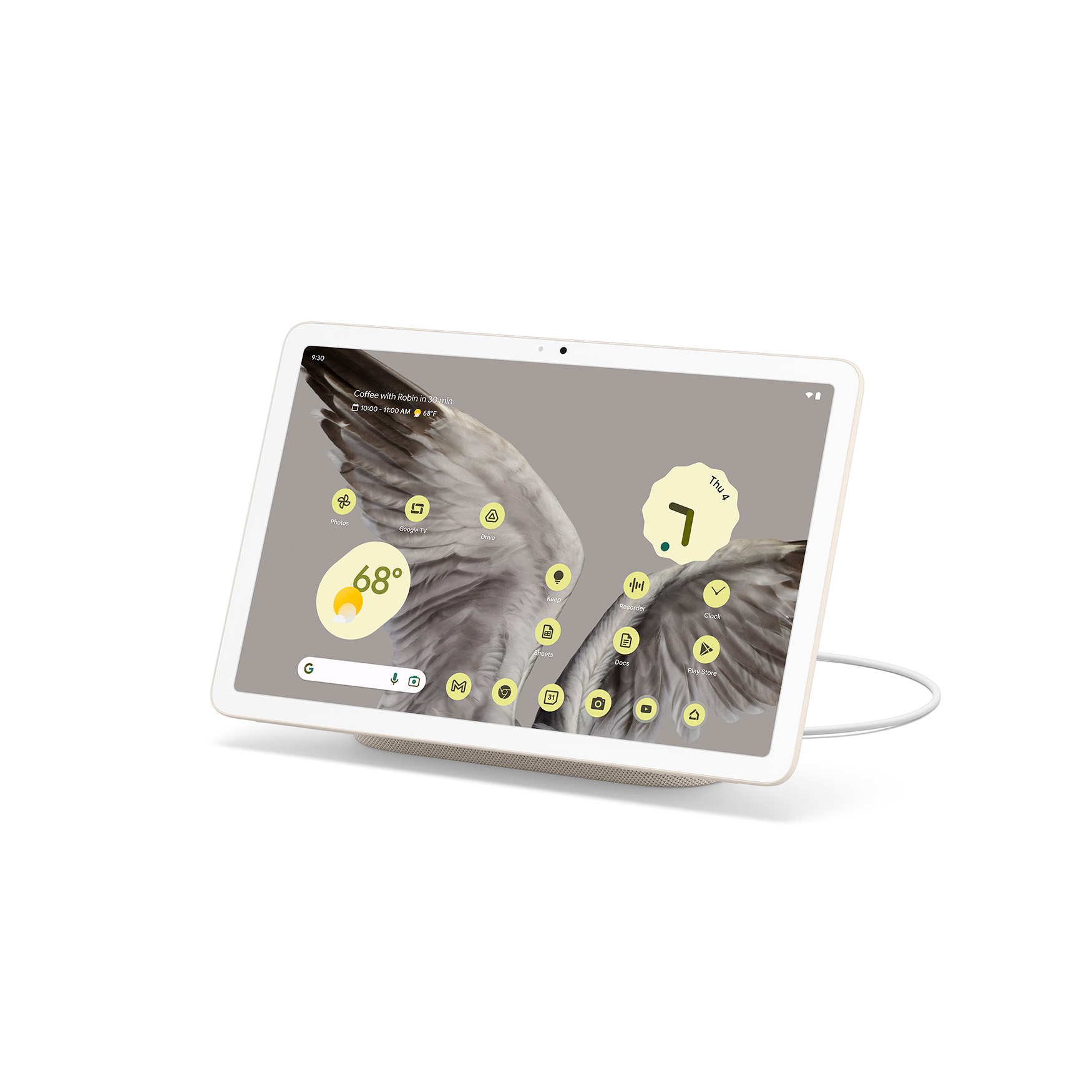

Google Pixel Tablet: Design
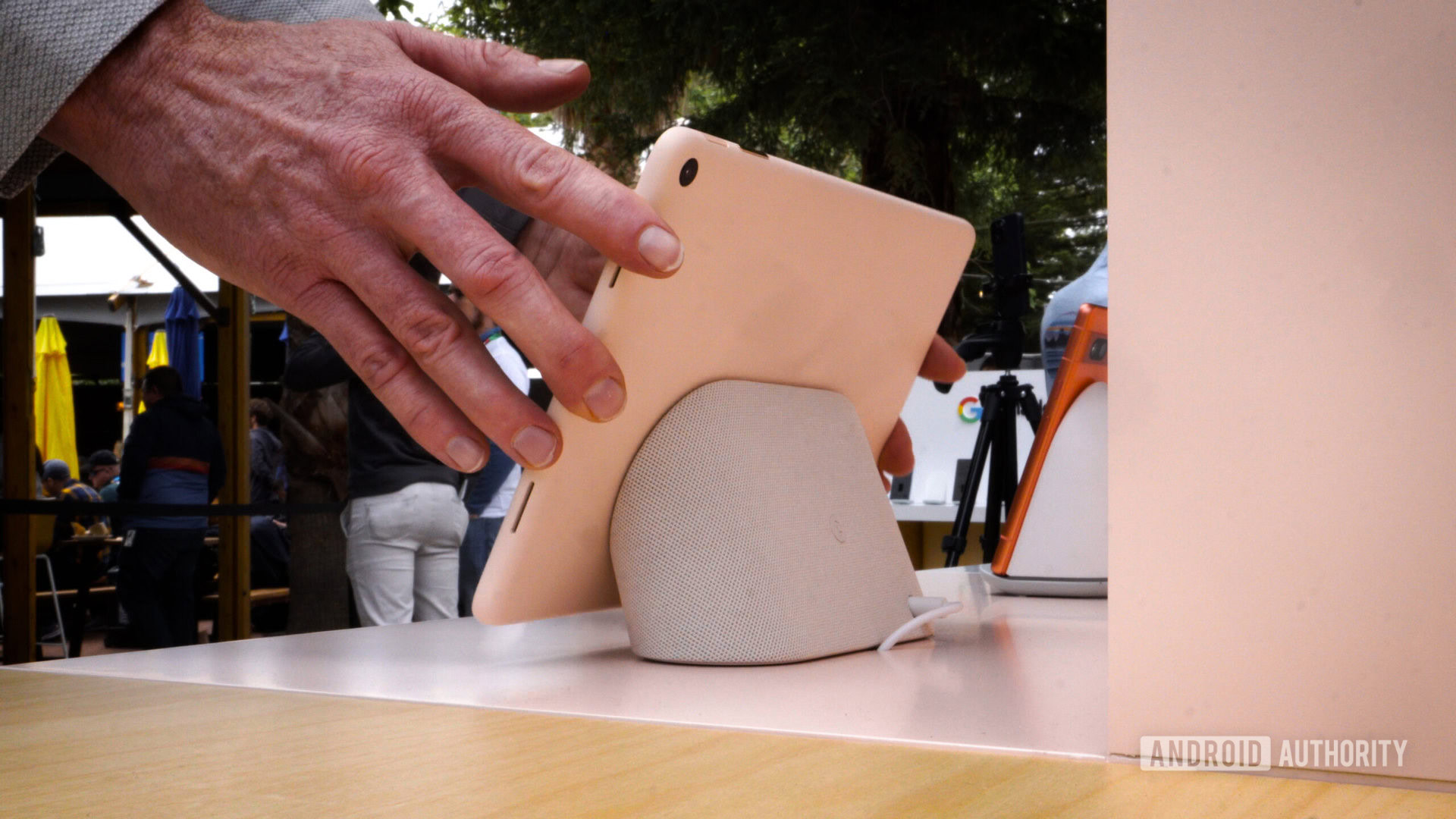
Google launched the Pixel Tablet on May 10, 2023, alongside its first foldable phone, the Pixel Fold. In my Pixel Fold hands-on, I talk a lot about how terrific it is that Google made the Pixel Fold fit the design language we see in its other non-foldable devices.
Unfortunately, Google didn’t try so hard with the Pixel Tablet. The tablet looks like it came from the “old” Google — the one that designed the Pixel 3 or Pixelbook Go. The Pixel Tablet is all curves with a back panel that looks and feels like it came from the design schematics for the Pixel 5. The very thick bezels around the display also make it look dated. Most slates from the major manufacturers have fairly minimal bezels.
This all isn’t necessarily bad, though. In fact, the tablet’s design makes it fit in nicely with the design ethos of Nest and its smart displays. In the end, that’s really where this tablet fits in the market, so it makes a lot of sense.
Outside of its aesthetic, the Pixel Tablet is pretty typical. It has a 10.95-inch LCD panel with a resolution of 2,560 x 1,600 in a 16:10 aspect ratio. Its brightness is pretty limited at 500 nits (which became a huge problem as we tried to photograph it under the shining California sun). It also comes in three colors: Hazel, Porcelain, and Rose.
What’s the deal with the dock?
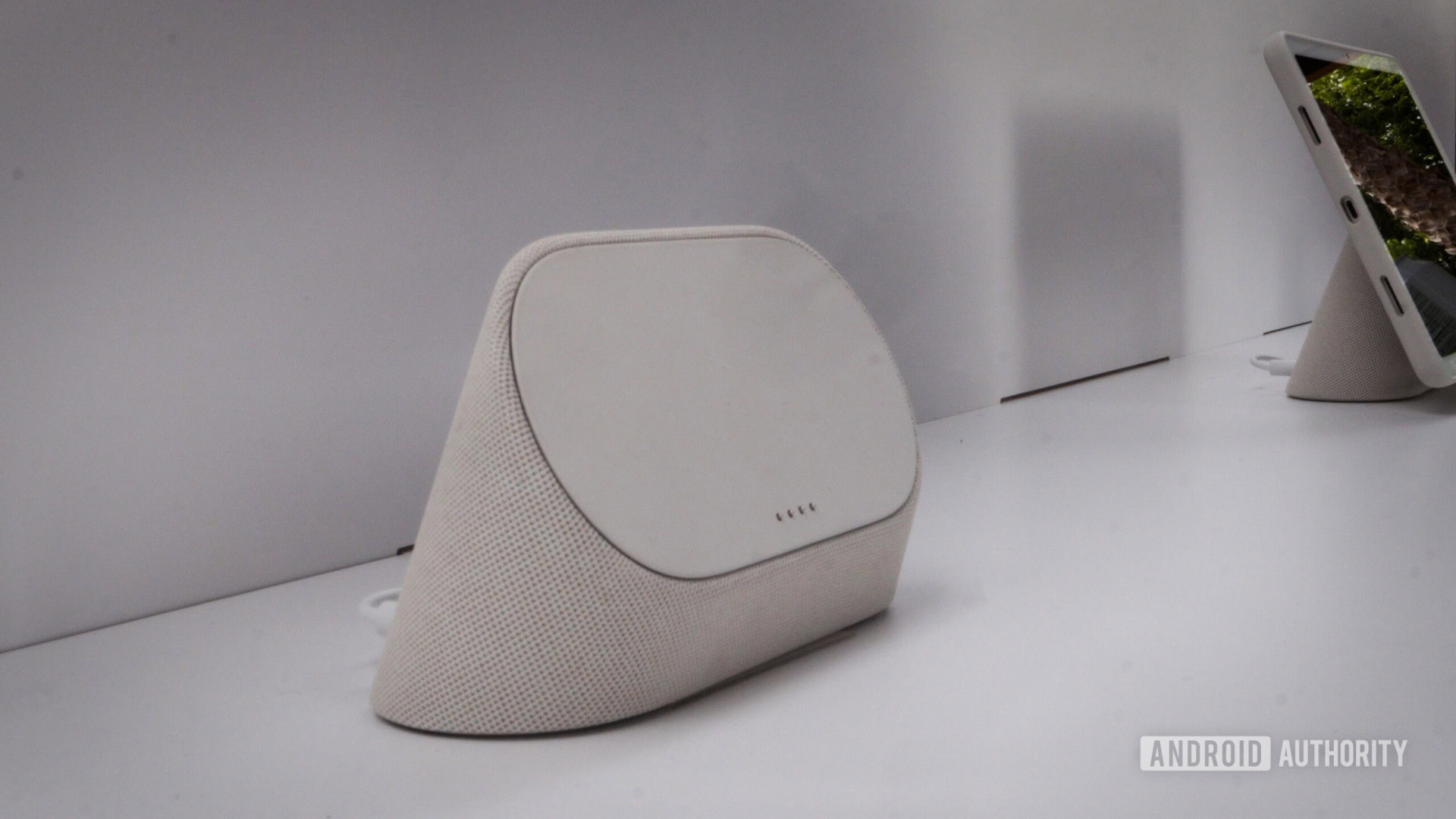
Let’s be honest: the Pixel Tablet on its own isn’t that interesting. The dock — which comes with the tablet whether you want it or not — is the true selling point of the device and, one could even argue, the entire reason behind the tablet’s existence. The dock intends to solve what Google says is the biggest problem with owning a tablet: it sits in a drawer unused and, when you eventually want to use it, you find its battery dead due to neglect.
With this in mind, the dock isn’t just a charger for the tablet. Using a four-pin magnetic connector, you snap the tablet onto the dock whenever you’re done carrying it around. This charges it, yes, but also turns the tablet into a smart display. It pulls from your Google Photos account to be a photo frame, answers your “OK Google” commands, plays music and video through Chromecast, and gives you quick-access controls for your smart home.
The dock turns an unused tablet into a smart display, so it's still useful even when you're not holding it.
The idea here is that when you want the Pixel Tablet to be a classic Android tablet, you just yank it off the dock and do what you like. When you’re done, you snap it back onto the dock, and it becomes a smart display. This solves Google’s big problem by keeping the tablet useful at all times.
Without question, this is a brilliant idea. Finally, Google has figured out something an Android tablet can do that an iPad can’t! Unfortunately, Google didn’t take the idea the full mile. The fatal flaw of the dock is that it only works with the tablet attached. Once the tablet comes off the dock, the dock becomes a brick.
This means you can’t have the tablet in your hand and Cast to the dock at the same time. The dock does not become a Nest Audio without the tablet. It doesn’t even become a Bluetooth speaker. It just…sits there. You can easily imagine how silly this is. Let’s say you’re in the kitchen listening to music and want to use the tablet to check out a recipe. You yank it off the dock and, like a record scratch, your music is now blaring out of tablet speakers instead of the dock, which now sits lifeless on your kitchen counter. It’s almost like Google has solved one problem while simultaneously creating another.
This all being said, the dock itself is quite nice. It has the same build style as a Nest Audio and has subtle coloring to match the tablet. It feels great to the touch with the woven fabric material we see on all Nest products. Snapping the tablet on or off is easy and intuitive. It’s so frustrating to see Google nail the physical design of the dock while completely fumbling with its functionality.
Cameras
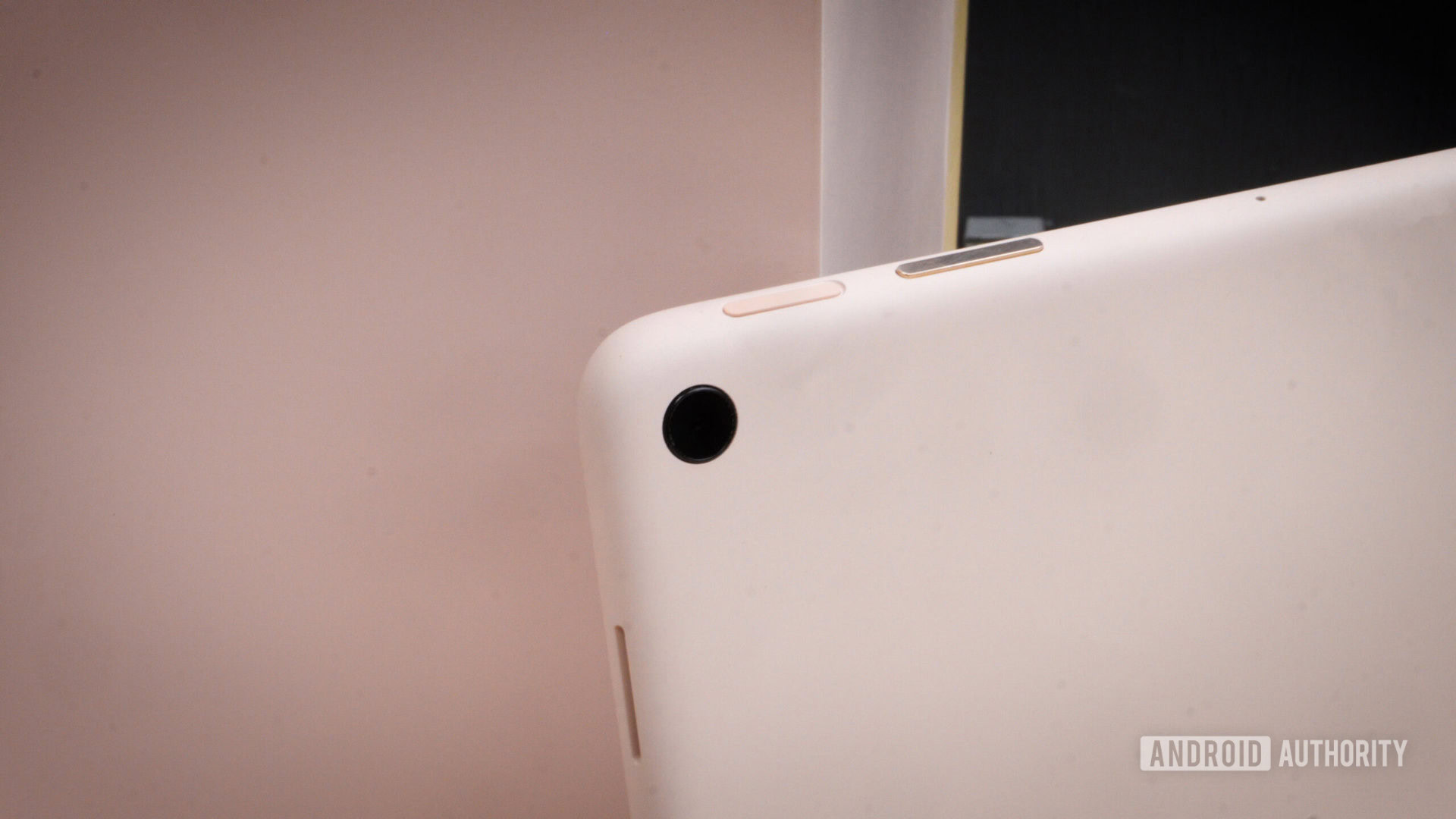
Google designed this tablet not to leave the house. There is no LTE support, nor is there GPS support. With this in mind, it shouldn’t be surprising to hear that Google didn’t put much effort into the camera hardware, either.
The two cameras on the tablet (one on the front, one on the back) are 8MP sensors that both cap out at 1080p. Neither one is going to get you great shots or crisp videos. However, the one on the front of the tablet is what you’ll probably use the most for things like video calls.
In that realm, Google put some effort into making the tablet more useful. During video calls, the tablet’s software (powered by the AI smarts of the Tensor G2 SoC) will alter the camera’s framing so you are always front and center. This is very similar to Apple’s Center Stage feature, which does the same thing.
Thankfully, the Pixel Tablet does have access to a lot of the computational photography features of Pixel smartphones. That includes access to Magic Eraser, Night Sight, Photo Unblur, and more.
Other features (or lack thereof)
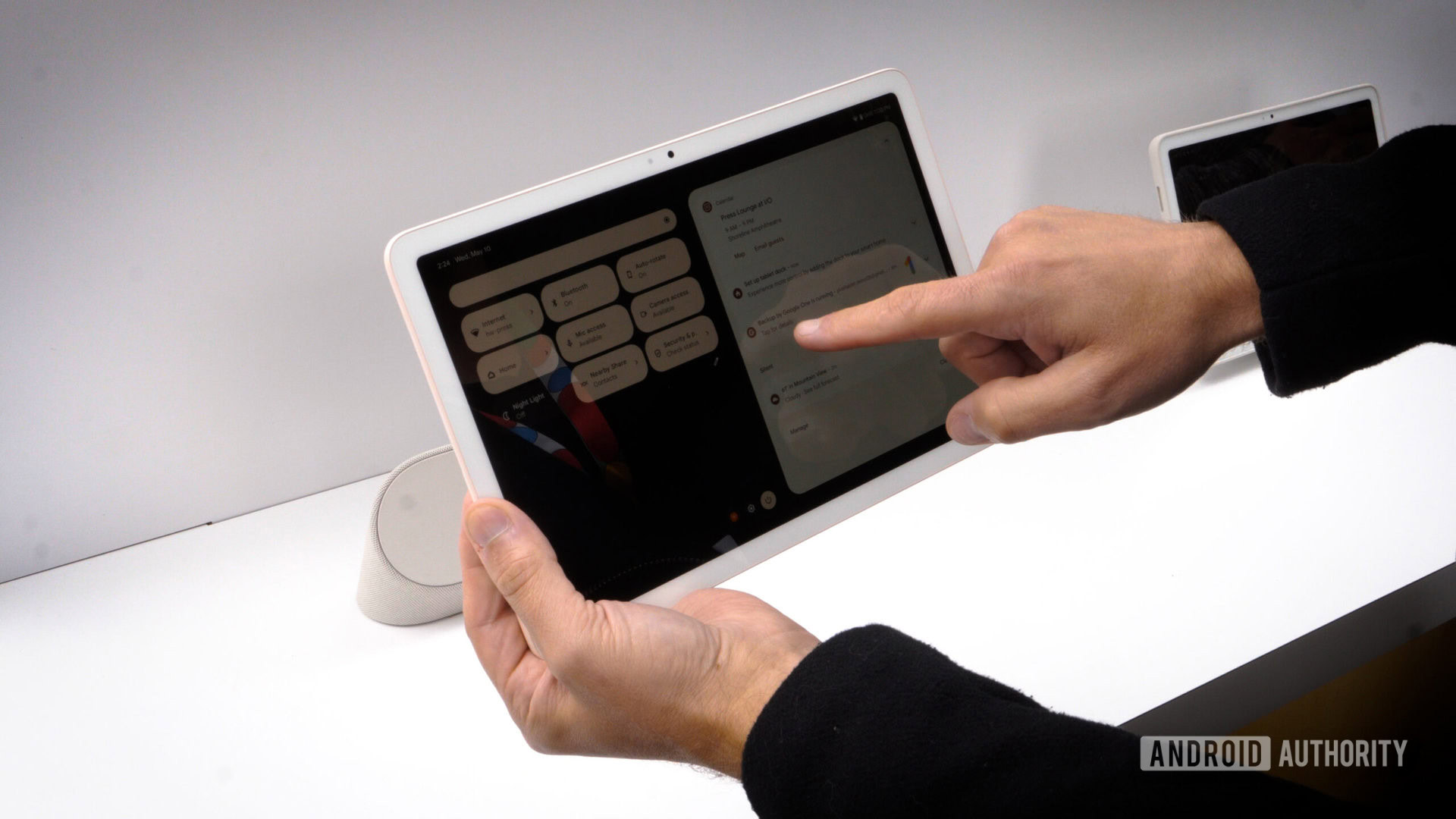
Being that this is an Android tablet, it does all the things you’d expect an Android tablet to do. It has access to the Google Play Store and all the apps and games you’ll find there. Some of those apps will be optimized for the larger screen, but a lot won’t. Google is trying to fix this problem, but it’s only gotten serious about it over the past few years, while Apple has been building not only apps but an entire tablet-specific operating system for iPads.
The tablet supports the use of a stylus but does not come with one. Google told us it has no plans to create a first-party stylus for the tablet, so, if you want one, you’ll need to buy a third-party unit that supports the USI 2.0 standard.
Likewise, Google says the tablet supports Bluetooth keyboards, but no first-party folio-style keyboard is in the works.
Google Pixel Tablet: Specs
| Google Pixel Tablet | |
|---|---|
Display | 10.95-inch LCD 16:10 aspect ratio 2,560 x 1,600 resolution 60Hz refresh rate 276ppi 500 nits brightness (typical) Supports USI 2.0 stylus (not included) |
Processor | Tensor G2 Titan M2 security coprocessor |
RAM | 8GB LPDDR5 RAM |
Storage | 128GB or 256GB UFS 3.1 storage No expandable storage |
Power | 7,020mAh battery 15W charging when attached to dock 15W charging when using USB-C cable |
Cameras | Rear: - 8MP wide (ƒ/2.0, 1/4-inch sensor, 1.12μm, 84° FoV, Fixed focus) Front: - 8MP wide (ƒ/2.0, 1/4-inch sensor, 1.12μm, 84° FoV, Fixed focus) |
Video | Rear: - 1080p at 30fps Front: - 1080p at 30fps Formats: - HEVC (H.265) and AVC (H.264) |
Audio | 3 far-field microphones 4-speaker stereo sound |
Durability | No official IP rating |
Connectivity | Wi-Fi 6 (802.11 a/b/g/n/ac/ax) 2x2 MIMO, simultaneous dual-band (2.4 GHz, 5.0 GHz) Bluetooth 5.2 Ultra-Wideband chip |
Biometrics | Power button fingerprint scanner |
Ports and switches | USB-C 3.2 Gen 2 4-pin accessory connector for dock |
Software | Pixel UI Android 13 3 Android updates 5 years of security updates |
Dimensions and weight | 258 x 169 x 8.1mm 493g |
Colors | Hazel, Porcelain, Rose Some colors unavailable in certain areas |
In the box | Pixel Tablet Charging Speaker Dock Power adapter Quick Start Guide Safety & Warranty booklet |
Google Pixel Tablet hands-on: Amazing for a very specific person
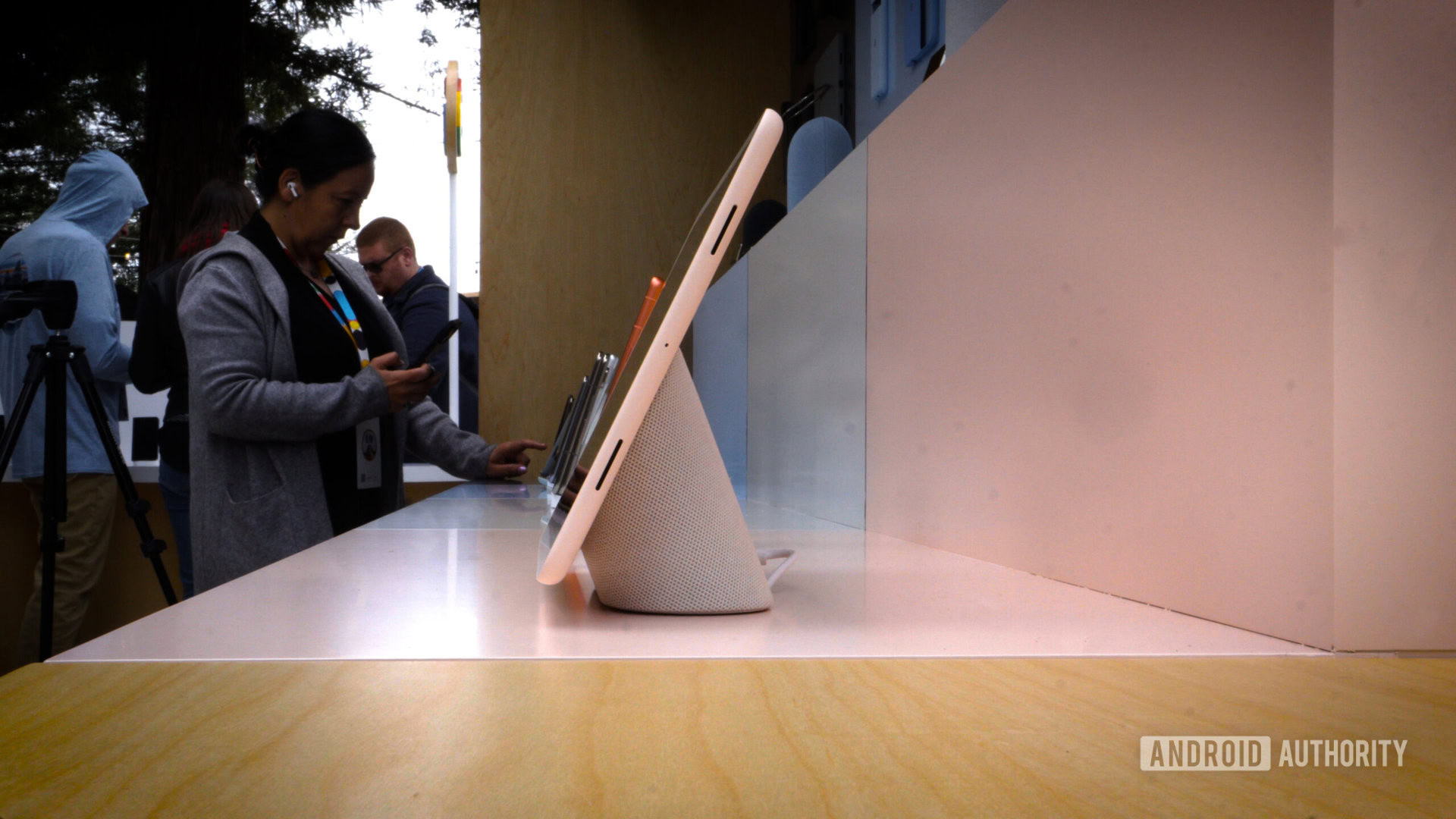
I won’t lie: I am the target audience for this device. In my kitchen, I have a Nest Hub Max and a cheap Android tablet. I use the Nest Hub Max as a Google Assistant-powered smart speaker, digital photo frame, and smart home controller. I use the tablet for recipes and watching the occasional YouTube video. The two screens are right next to each other, which is almost comical. Why can’t they just be one device?
Buying the Google Pixel Tablet would enable me to conserve counter space by removing both the smart display and the tablet and replacing them with the Pixel Tablet and its dock. To make things even better, I also have a Nest Audio in my kitchen, so the problem of the dock becoming a brick without the tablet attached isn’t too big of a deal. I can just Cast to the Nest Audio instead.
However, I realize that my situation is probably not common. Most people want an Android tablet to be very mobile. They want to hand it to their kids on car trips or use it to watch movies on an airplane. You can do those things with the Pixel Tablet, sure, but that’s not what Google designed the tablet to do. It’s designed to live in your house attached to the dock 90% of the time.
If you meet some specific criteria, you'll love this. However, if you want an iPad, you should probably still get an iPad.
Kudos to Google for trying to carve out a niche of its own in the tablet space. It knows it can’t compete with the iPad, so it’s trying to do something completely different. That’s great and all, but the audience for this particular device might be too small for it to be a hit.
In other words, if you’re like me and have very specific desires for your tablet, the Pixel Tablet is likely exactly what you’re looking for. If you’re looking for an all-around general tablet, though, you’re still probably better off with an iPad.
If you’re ready to take the plunge, the Google Pixel Tablet is $499. Remember, that price includes the dock and there’s no way to buy the tablet without the dock. Additional docks are $129, in case you want to move the tablet from room to room. There’s also a case for the tablet that’s very clever, with a built-in kickstand that doesn’t prevent you from docking the tablet. That case is $79. All these products come in three colorways and are available to pre-order now for a June 20 launch date.

